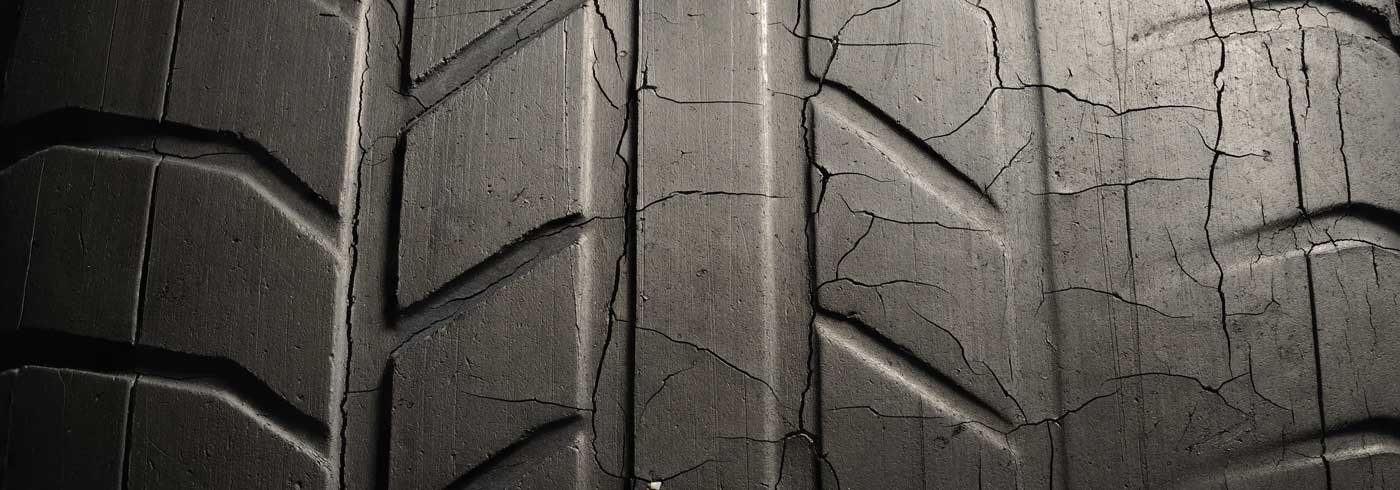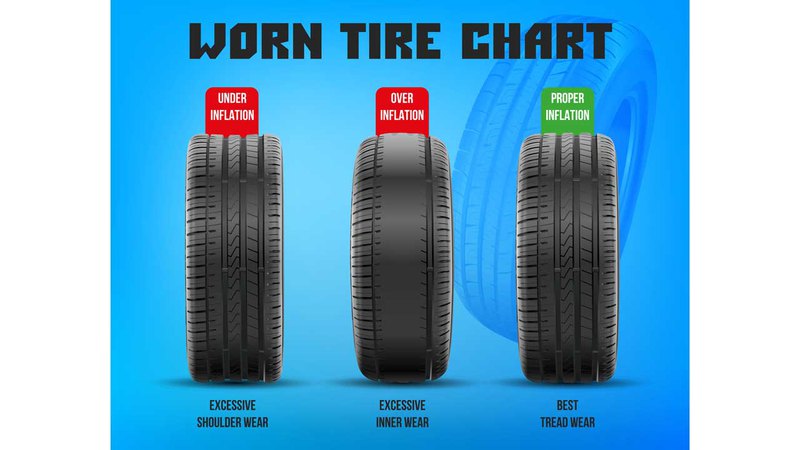
Tire Wear Patterns You Should Know About As a Car Owner
Creamery Tire is a family-owned and operated business that can complete wheel alignment, tire wear repair, and more. In this article, we will discuss tire wear and what causes it.
Got tire wear? Well, all car owners experience it, but not many know about the tire wear patterns that we should all be on the lookout for. Professional tire service experts recommend that all car owners should look out for these signs and patterns since it might just be a case of improper wheel alignment. It can help them prevent further damage to your suspension, axle, steering, and fuel consumption.
Here is a guide that can help you out with that!
How Can a Tire Wear Chart Help?
You can track whether there is toe wear or camber wear by using the tire wear chart above as a guide. If this is the case, you might have an alignment issue with one of your wheels. The phrase "toe wear" refers to wear on the tire's inner or outer edge. When the wear on such pieces is deemed to be severe, it is called camber wear.

Therefore, if you see that the tire wear pattern appears thinner towards the inner or outside border of that tire, it may indicate that the wheels are misaligned since they are leaning toward one side rather than the other. Excessive negative or positive toe can put the driver's safety in danger.
Here are some of the most common tire wear types:
Outer or Inner Wear
Toe wear or excessive wear on the tire's outer and inner edge indicates that the wheels may not be appropriately aligned. You'll probably need to set up a time with a technician to assist with repairs if you have front tire wearing on the outside or inside.
Center Wear
The tire is probably overinflated if the center wears out more quickly than the edges. Examine the label typically located in the driver-side door jamb or the owner's handbook to determine the recommended tire pressure for the car. For a comfortable, secure ride, regulate the tire pressure appropriately.
Edge Wear
If a tire's edges begin to wear down more quickly than its center, this might mean it is under-inflated. As required, apply air to the tire according to the tire's side recommended pressure.
Cupping Wear
What causes tire cupping wear? Shock absorbers, bushings, struts, and other suspension parts deteriorate with the mileage. The outcome can be that a tire bounces somewhat rather than rolling smoothly along the road. The bouncing generates unequal pressure areas on tires, which causes tire cupping.
Patchy Wear
Another type of wear is patchy wear, which suggests that the tire is not balanced. Have the tires rotated and spun by a professional to help distribute wear. After 5,000 miles, according to the National Highway Traffic Safety Administration, tires should be spun and rotated, but it's a smart idea to first check the owner's handbook.
Take Help from Our Tire Wear Patterns Guide
In America, the tire wear patterns guide indicates that the tire tread dimensions are typically stated in 32nds of an inch. For instance, all-season vehicle tires sometimes have tread depths between 9/32" and 11/32" when they are brand new.
The majority of states have set a 2/32-inch minimum tread depth standard, which mandates that if a tire wears down to such a depth, drivers must replace it. No matter your state, we advise replacing a tire if any part of the tread reaches 2/32 inches depth.
Utilize the tread groove-mounted tire tread depth indicators. Such wear bars, also called indications, are located all over every light truck, passenger, and medium truck tire. The purpose of the tire wear indicator is to directly assess if you have descended to 2/32-inch in the grooves without using an instrument to measure its depth. Every tire with the tread ribs flush with the indication bars must be replaced.
The "penny test" is also a technique for assessing tread depth gauge. In the space between the tread ribs, insert a coin with Abraham Lincoln's head upside down. The tread is at minimum 2/32-inch deep if you can fit the top of Abraham Lincoln's head between its ribs. If Lincoln's entire head can be seen at any groove position, this is a symptom of tire wear and we recommend replacing that tire as soon as possible.
What Causes Uneven Tire Wear?
If you are wondering what causes uneven tire wear, the answer is simple. Over- or under-inflated tires may result in uneven wear of the tire's tread over the breadth of the track. Increased wear in the middle of the tire indicates over-inflation. What would cause a tire to wear on the outside? Severely worn tread on the sides of your tire shows underinflation.

Moreover, underinflated tires consume more gasoline, and overinflated tires are less stable while driving. Every driver must be able to check their tire pressure.
The intermittent tire deterioration may be prevented by properly inflating the tires according to the manufacturer's recommendations. The tire's recommended weight may be found on a label on the driver's side door frame or in the car's user handbook. Your best course of action is to check all tire pressures monthly.
A sophisticated suspension system with many linked pieces attaches to your car's wheels to provide a safe ride. Each suspension modification needs a new optical wheel alignment. Even if the cost is more, you can save money in the long run. The car will drive smoothly and exactly how it should, thanks to correct optical alignment.
Talk to Creamery Tire about Tire Wear Bars & More
Tire wear bars can help you prevent wear in the future. Creamery Tire can help car owners with checking tear wear with indicators, perform wheel alignment, and assist in other related tasks.
We are a locally owned and operated tire service center with locations in Collegeville, PA, or Chalfont, PA. Get in touch today at 610-489-2122 or drop by for premium tire services.
